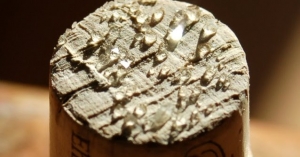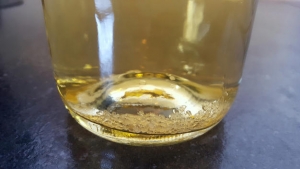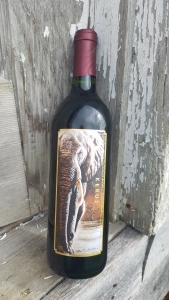Although many dogs think that trees are good for only one or two things (mainly for making branches that can be carried and tossed), a sophisticated winery dog like me knows that trees have a very special place in our industry. In my last blog, I gave you a bit of information about how barrels came to be used to store wine – they sure beat carrying around those huge amphora AND they make wine taste even better. Today, I am going to talk to you about the three types of oak used to barrel age wines.
Barrel makers are called coopers, and the companies they work for are called cooperages. This name is thought to come from the Gaul region (just like the use of oak barrels) where the wine was stored in cupals and the makers of these were called cuparius. These days, it is a pretty sure bet that if your last name is Cooper or Hooper, barrel making is somewhere in your family history.
All trees used by coopers in the barrel making process are grown in cooler climates. Growing in a cooler climate allows the oak trees to grow more slowly and to develop a tighter grain. Trees used for barrels are grown in tightly spaced forests that force the trees to grow straight and this helps to reduce any knots that may develop. They are grown until they are about 100 years old and 5 feet in circumference. The only part of the tree used by coopers is the section of the trunk from right above ground level to right below the first branches. This section is cut, by hand for French and by machine for American and European, into the narrow staves that form the barrels. These staves must be air dried for 3-4 years before being made into barrels. A skilled cooper can get at least two and up to four barrels from each tree.
The most famous, and sought after, type is the French oak. Trees used for these are grown in the Allier, Troncais, and Vosges forests and can costs upwards of $4,000 a barrel. More commonly, the prices for these barrels range from $850-3,600 a barrel. Because the staves for French oak barrels are hand cut to decrease the tannin and astringency levels, the cost for these barrels is significantly more than their American and European counterparts. Pinot Noir and Chardonnay are especially suited for these barrels as they soak up the subtle flavors so well, but all wines can benefit from the satin and silk textures that aging in French oak imparts.
European oak, sometimes called Hungarian, is considered to be the middle ground in the barrel world. It comes from the same type of oak as French oak barrels (Quercus robur), but at $560-700 per barrel, it costs much less. European oak barrels are often used on full-bodied varietals, like Malbec and Petit Verdot, that can hold their own against the richer, nuttier flavors that these barrels give.
American oak, although used mostly by the bourbon industry, has also found a niche in the wine world. This oak is much stronger in flavor, and is often added in the aging process to impart notes of cream soda, vanilla, coconut, and even dill. Grown in 18 different states, the American White Oak, adds a rugged quality to wines that are clean and fruit-forward. These are the least expensive barrels at $360-500 a pop.
Winemakers make many choices in barrel aging that have huge impacts on the flavor and tastes of wine: the origin of the barrel they use, the variety of barrels used in the aging process, the choice of using toasted barrels, and aging for different lengths of time. By allowing a slow oxidation of the wine and by imparting a huge variety of flavors, aging in oak increases the complexity and softens the finish of any wine it touches. However, it isn’t the only barreling option available in these modern times. In the next blog, I will talk about some of the other options available in the wine industry today.





